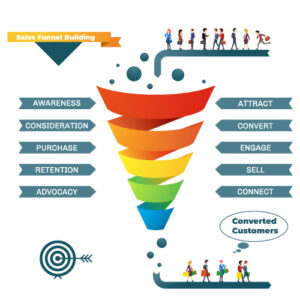Introduction:
In the intricate world of online advertising, achieving a high Ad Rank is essential for securing prominent ad placements and maximizing the effectiveness of your campaigns. While bid amount certainly plays a role in this equation, Quality Score is the cornerstone that can significantly impact your Ad Rank. In this blog, we’ll delve deep into the concept of Quality Score, exploring its components, its importance in Ad Rank calculation, and strategies to enhance it for better ad performance.
Understanding Quality Score:Quality Score is a metric assigned by advertising platforms like Google Ads to gauge the relevance and quality of your ads and keywords. It reflects how well your ads resonate with users’ search intent, ensuring that users are presented with advertisements that align with their needs and preferences.
The Components of Quality Score:
Ad Relevance: This component assesses how closely your ad text matches the user’s search query. Crafting ad copy that directly addresses user intent can boost ad relevance.
Landing Page Experience: Your landing page’s effectiveness and relevance are crucial. A seamless user experience, relevant content, and clear calls to action create a positive landing page experience.
Click-Through Rate (CTR): The CTR indicates the percentage of users who click on your advertisement after seeing it. Higher CTRs signal that your ad resonates well with users and fulfills their needs.
The Significance of Quality Score in Ad Rank:
Quality Score doesn’t exist in isolation—it’s a pivotal factor in determining your Ad Rank and your bid amount. Ad Rank is calculated using the formula: Ad Rank = Bid Amount × Quality Score. Even with a high bid, a poor Quality Score can hinder your ad’s chances of securing a top position.
Strategies to Improve Quality Score and Ad Rank:
Keyword Research: Conduct in-depth keyword research to ensure that your campaigns target relevant terms. Aligning your keywords with user intent will naturally enhance ad relevance.
Compelling Ad Copy: Write persuasive ad copy that includes the keyword and speaks directly to users’ needs. Highlight unique selling points and benefits to capture attention.
Refined Landing Pages: Ensure your landing pages provide a seamless and relevant user experience. Direct users to specific pages related to their search query for higher engagement and conversions.
Negative Keywords: Negative Keywords could be used to filter out irrelevant searches that could harm your CTR and Quality Score.
Testing and Optimization: Regularly test different ad variations and landing pages to identify what resonates best with your audience. Continuous optimization can lead to higher CTR and improved Quality Score.
Mobile Optimization: Ensuring your mobile-friendly landing pages is crucial as mobile searches grow. A positive mobile experience can positively impact the Quality Score.
Monitoring and Iteration:
Improving Quality Score is an ongoing process. Regularly monitor your campaigns, track changes in Quality Score, and adjust your strategies accordingly. Remember that as your Quality Score improves, you’ll likely see a positive ripple effect on your Ad Rank and ad positioning.
Conclusion:
Quality Score is the linchpin connecting ad relevance, user experience, and performance. By understanding its components and role in determining Ad Rank, advertisers can strategically enhance their campaigns to achieve better placements, higher visibility, and improved ROI. Employing innovative strategies to decode and optimize Quality Score can set the stage for successful online advertising endeavours.
Reach out to us at [email protected]





